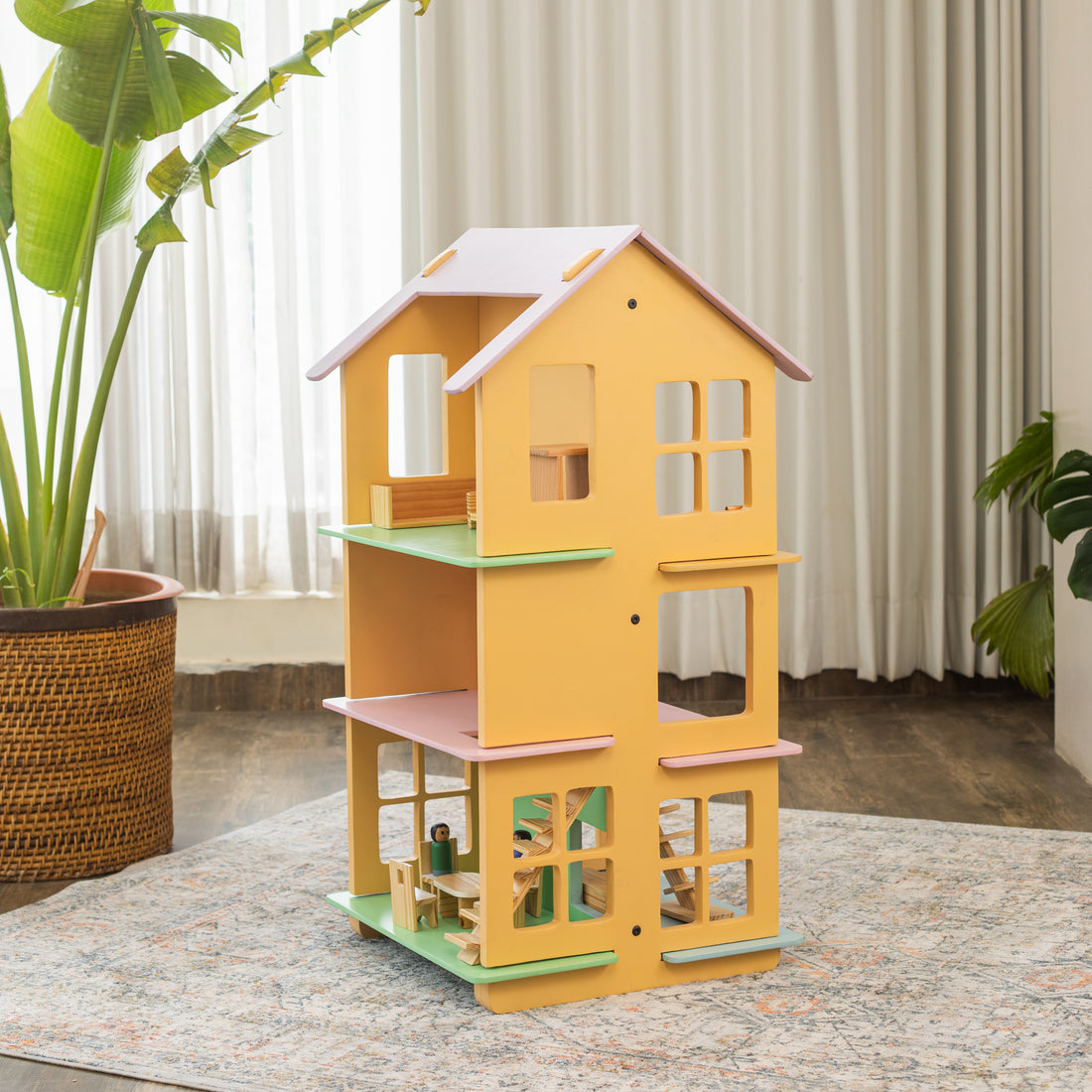
Exploring Wonders of having a Doll Houses
Dollhouses: More Than Just a Fun Childhood Staple
Dollhouses have been a staple of childhood play for generations, and it's not hard to see why. The miniature worlds within dollhouses offer endless opportunities for imaginative play and storytelling. But did you know that dollhouses and Wood-O-Kidz Travel doll houses are also surprisingly beneficial for a child's development?
As a toy designer and toy brand owner, I have seen firsthand the cognitive, language, academic, motor skills, and social emotional learning benefits of incorporating dollhouses into the play of early childhood . Here are just a few reasons why I believe dollhouses are a must-have addition to any early childhood environment.
When should children start playing with doll's houses?
There's no hard and fast rule about when children should start playing with doll's houses.
Before the age of two, play is sensorimotor, meaning it is focused movements and sensory exploration. Dolls are more likely to be posted through windows than engaged in conversation.
But, over time, dialogue takes centre stage and we enter the golden age of the doll’s house.
What’s the right doll's house for my child?
Choosing a doll's house can seem like a daunting task given the plethora of options available. The key is to select a doll's house that is appropriate for your child's age and developmental stage.
Younger children might prefer a simple, sturdy doll's house with large furniture and characters, while older children might enjoy a more detailed doll's house with intricate features.
Language Development Through Doll House
Cognitive Development:
Playing with a dollhouse promotes cognitive development in a variety of ways. Children are required to use problem-solving skills to arrange and organize the furniture and accessories inside the dollhouse. They will also develop spatial awareness and critical thinking skills as they figure out how to navigate around the miniature world and create different storylines and scenarios with their dolls.
Language Development:
Using language to express ideas and feelings is essential for young children, and playing with a dollhouse encourages this type of communication. Children can talk to themselves or their peers as they play, practicing expressing their thoughts and emotions. Additionally, playing with a dollhouse provides opportunities to develop vocabulary related to the different rooms and activities that take place within the house.
Academic Skills:
Playing with a dollhouse can also support academic skills such as counting, sequencing, and sorting. Children can count dolls, arrange furniture by size or color, or organize the items inside the dollhouse by room. These activities help children to develop a foundation for future math concepts.
Motor Skill Development:
Playing with a dollhouse encourages the development of fine and gross motor skills. Moving the miniature dolls and furniture around requires significant dexterity and hand-eye coordination. Furthermore, setting up and arranging furniture requires the use of large muscle groups to move around, which helps develop gross motor skills.
Social Emotional Development:
Playing with a dollhouse also supports social emotional development. Children can practice empathy and social skills as they role-play different scenarios with their dolls. They can explore their feelings and learn how to express them through imaginative play. This type of play also supports children's development of self-regulation and emotional awareness.
In conclusion, dollhouses are much more than just a fun childhood staple.
In conclusion, doll's houses are more than just toys; they are tools for learning and development. They offer an array of benefits, from enhancing motor skills to boosting creativity, fostering empathy, and understanding complex social dynamics. No matter the age, gender, or developmental stage of your child, doll's houses can provide a rich, engaging, and educative play experience.
Click here to follow woodokidz Doll House.
